Artist’s conception of SIMP J01365663+0933473, an object with 12.7 times the mass of Jupiter, but a magnetic field 200 times more powerful than Jupiter’s. This object is 20 light-years from Earth.
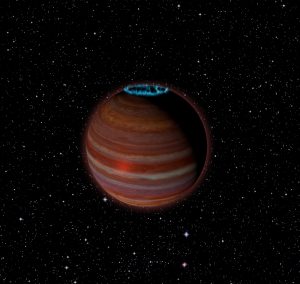
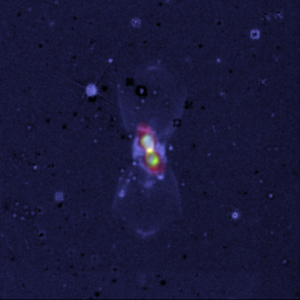
Pair of Colliding Stars Spill Radioactive Molecules into Space
A widefield, composite image of CK Vul, the remains of a double-star collision. This impact launched radioactive molecules into space, as seen in the orange double-lobe structure at the center. This is an ALMA image of 27-aluminum monofluoride, but the rare, radioactive isotopic version of AlF resides in the same region. The red, diffuse image is an ALMA image of the more extended dust in the region. The blue is optical hydrogen emission as seen by the Gemini observatory.
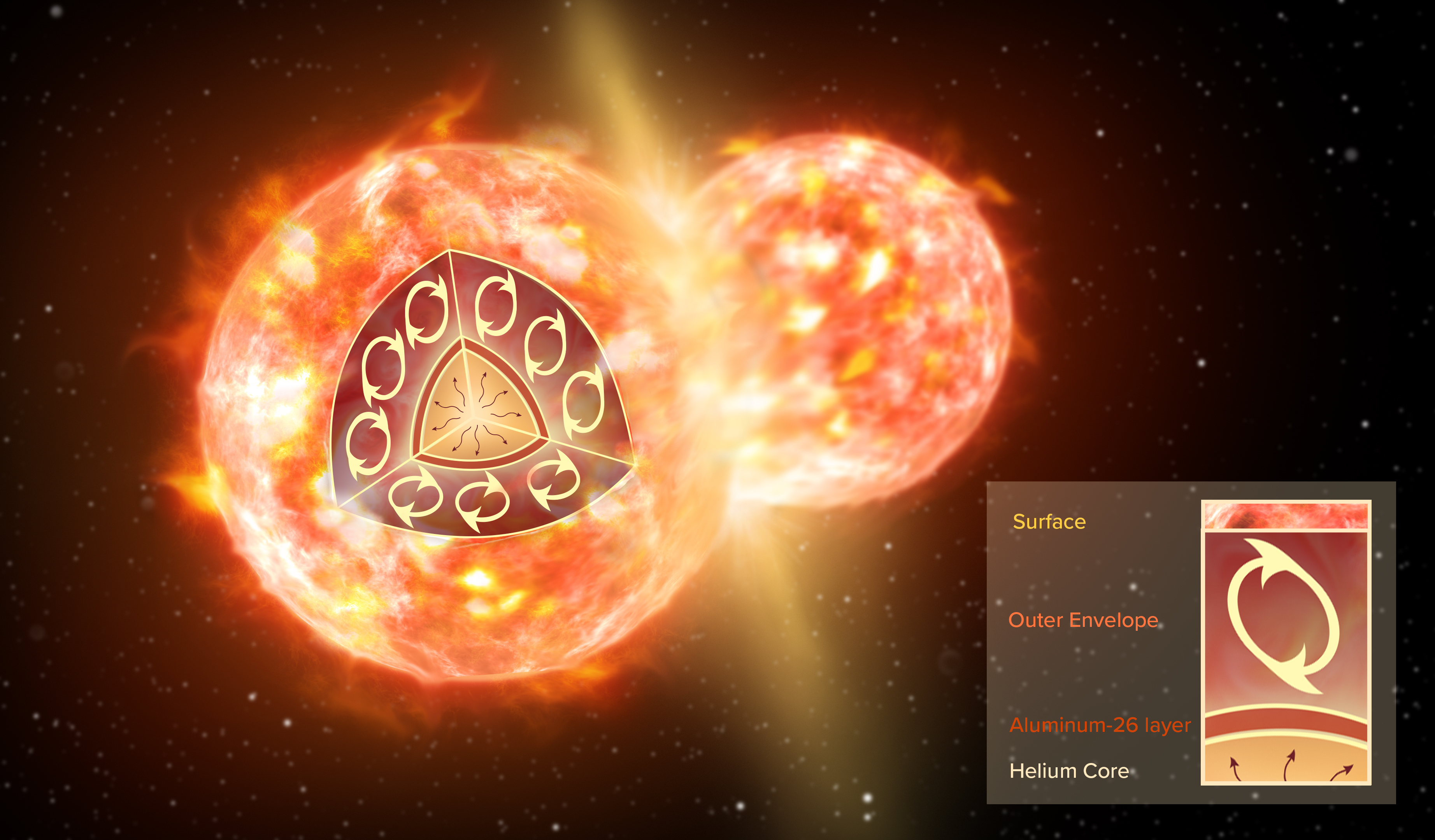
Artist Impression of CK Vul
Artist impression of the collision of two stars, like the ones that formed CK Vul. The inset illustrates the inner structure of one red giant before the merger. A thin layer of 26-aluminum (brown) surrounds a helium core. An extended convective envelope (not to scale), which forms the outermost layer of the star, can mix material from inside the star to the surface, but it never reaches deep enough to dredge 26-aluminum up to the surface. Only a collision with another star can disperse 26-aluminum.
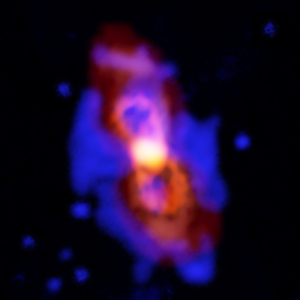
First Detection of Aluminium Nuclear Isotope in Space
Composite image of CK Vul, the remains of a double-star collision. This impact launched radioactive molecules into space, as seen in the orange double-lobe structure at the center. This is an ALMA image of 27-aluminum monofluoride, but the rare isotopic version of AlF resides in the same region. The red, diffuse image is an ALMA image of the more extended dust in the region. The blue is optical hydrogen emission as seen by the Gemini observatory.
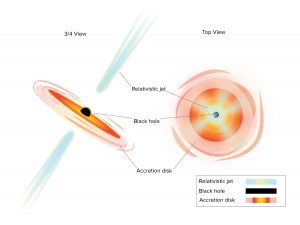
AGNs Seen at Different Angles
One type of active galactic nuclei (AGN) — a supermassive black hole that is gobbling up gas and dust — is called a quasar. Quasars got their name because, when first discovered, they were called “quasi-stellar objects” meaning “star-like.” They are very powerful sources of radiation, sometimes having luminosities thousands of times greater than entire galaxies, but when observed optically they appeared to only be distant faint stars or, in some cases, didn’t appear at all. Nowadays we know these objects are actually the nuclei of galaxies with feeding supermassive black holes at their centers. These supermassive black holes swirl the nearby gas and dust into an accretion disk and often emit jets of particles away at nearly the speed of light. If one of these jets happens to be pointing directly at the Earth we call it a blazar.
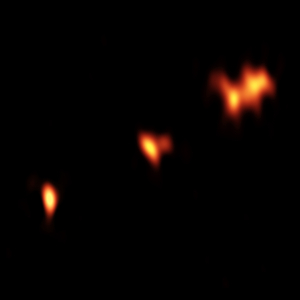
Distant Quasar Providing Clues to Early-Universe Conditions
VLBA image of the quasar P352–15, at a distance of nearly 13 billion light-years from Earth. Three main components of the object are seen, with two of them showing further substructure.

